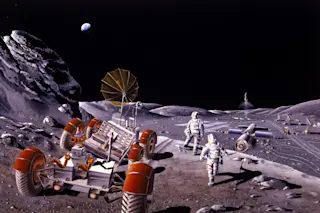The future that never happened: A bustling Mon base as envisioned by a NASA study in 1986. (Credit: NASA/Dennis M. Davidson) NASA's human spaceflight program has been in a state of uncertainty pretty much from the moment the Apollo 17 crew left the surface of the Moon 45 years ago this month. The Space Shuttle never became the hoped-for workhorse that would makes space access cheap and routine; the International Space Station never became a glorious gateway to deep-space exploration. Now NASA faces yet another U-turn as President Trump has directed the agency's administrator to send astronauts back to the moon. One problem: There is no NASA administrator (the Senate hasn't voted on the nominee, Rep. Jim Bridenstine, so he'll have to be renominated when congress reconvenes next month). Another problem: There is no budget to support another Apollo-style venture. So where do we go from here? I spoke with ...
Back to the Moon for Real: A Conversation with Private-Spaceflight Evangelist Charles Miller
Explore NASA's human spaceflight program and the potential for commercial partnerships to return to the Moon sustainably and affordably.
More on Discover
Stay Curious
SubscribeTo The Magazine
Save up to 40% off the cover price when you subscribe to Discover magazine.
Subscribe













